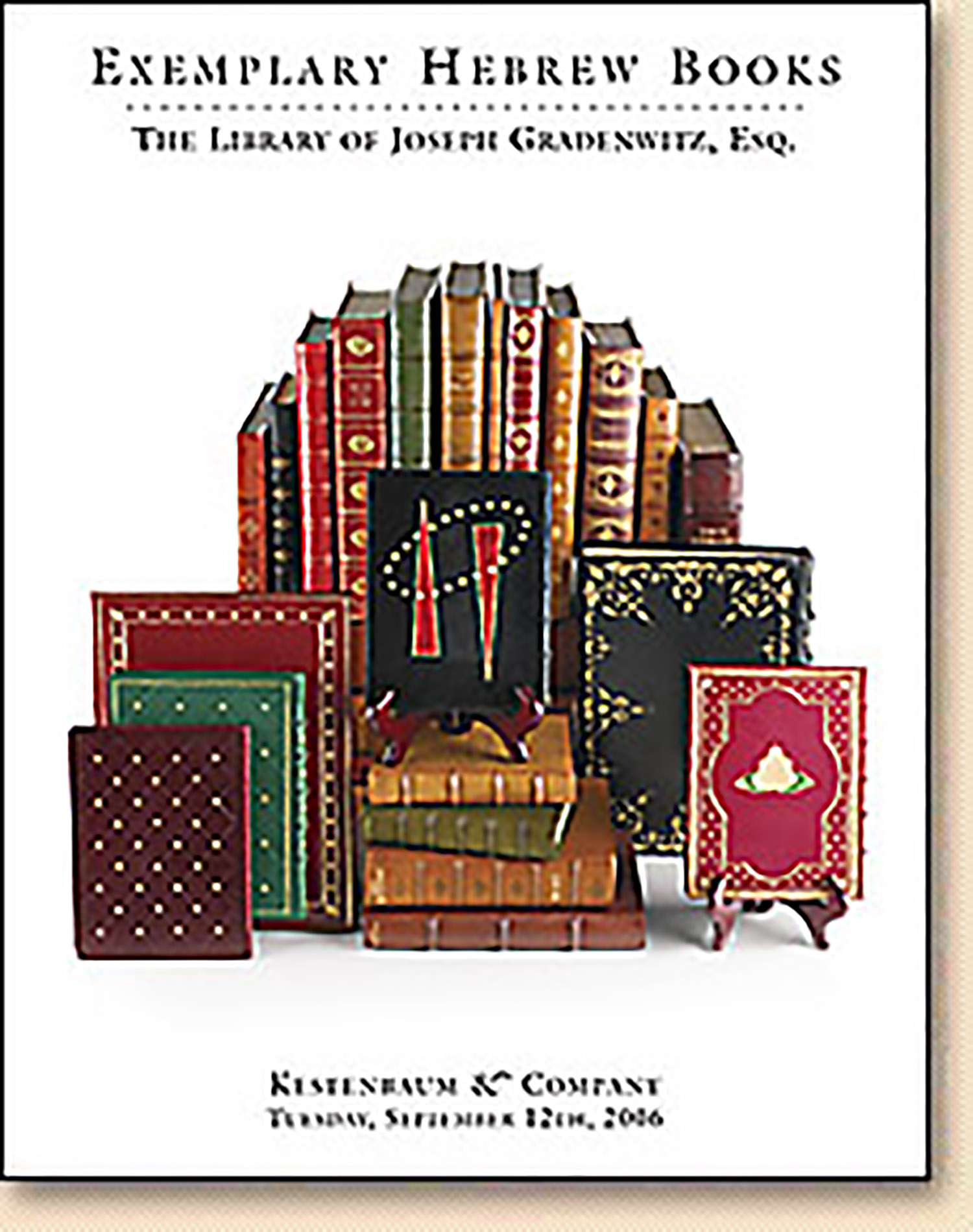(RaSHBa”TZ). Sepher ha-TaSHBe”TZ [responsa]. Appended: “Chut ha-Meshulash” [responsa by later Algerian authorities: Solomon Duran, Solomon Serour and Abraham ibn Tawah]

AUCTION 34 |
Tuesday, September 12th,
2006 at 1:00
Exemplary Hebrew Books: The Library of Joseph Gradenwitz, Esq.
Lot 47
DURAN, SHIMON BEN TZEMACH.
(RaSHBa”TZ). Sepher ha-TaSHBe”TZ [responsa]. Appended: “Chut ha-Meshulash” [responsa by later Algerian authorities: Solomon Duran, Solomon Serour and Abraham ibn Tawah]
Amsterdam: Naphtali Herz Levi Rofe 1738-1741
Est: $1,500 - $2,000
PRICE REALIZED $2,200
R. Shimon ben Zemach Duran (1361-1444), a native of the isle of Majorca, was one of three prominent rabbinic figures who fled to Algeria in the year 1391 in order to escape anti-Jewish riots in their native Spain - the other two being R. Isaac ben Shesheth Perfet (Riva”sh) and R. Ephraim b. Israel Elankawa (buried in Tlemcen). See EJ, Vol. iX, col. 32; JE, Vol. I, p. 437.
The gentleman-scholar Dan Yardeni (and spouse) has undertaken a thorough study of the peregrinations of Meir Crescas from his native North Africa through Asia Minor and Europe over a period of eight years until he successfuly brought his work Tashbetz to print in Amsterdam. They also scrutinize in great detail the variants of the titles of the book in an attempt to penetrate what they term a “riddle.” At least part of the riddle is cleared up by the revelation that it was the original intent of the printer to issue Tashbetz in two volumes, rather than one. See D.-G. Yardeni, “The ‘Tashbetz’ by R. Shimon b. Zemah Duran; Amsterdam 1739-1742,” in: Alei Sefer, No. 10 (June 1982), pp. 119-132.
Popular lore has suggested that in the merit of Duran’s respect for holy books, his own works were beautifully bound
